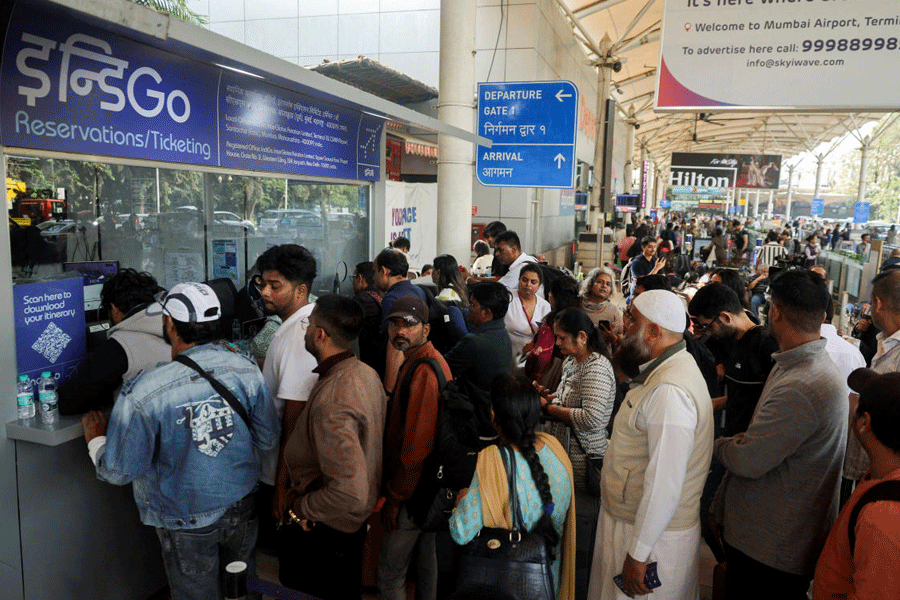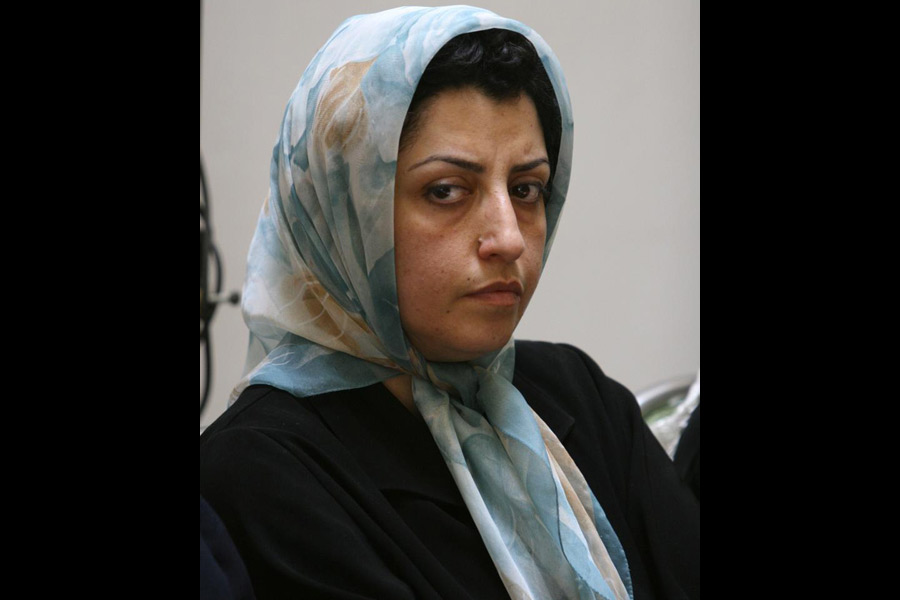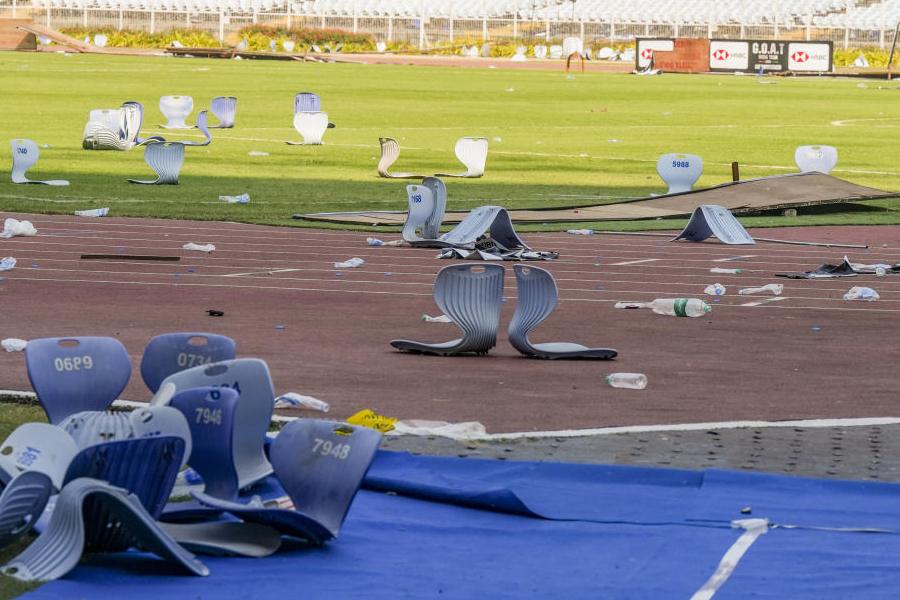 |
The interview has come through after a year. Around this time, a year ago, he wanted to be a recluse. Media arc lights, both national and international, were focused on what he had to say. He found solace in his Lord — at the Sree Padmanabhaswamy Temple — whose very belongings were dragged into the Supreme Court.
Today Uthradom Thirunal Marthanda Varma, the 90-year-old head of the erstwhile Travancore royal family, is more at peace. “Should I speak in English or Malayalam,” asks Varma as he enters the visiting room of Pattom Palace, his unassuming double-storey house in Thiruvanathapuram.
He is wearing a cotton mundu and a pale beige shirt. The only hint of wealth is a Swiss Gloria vintage wrist watch. It’s difficult to believe that he is the head of the richest temple in the world. The visiting room too is sparsely furnished. It consists of a sofa and two chairs, a centre table and a side table with a small replica of the Padmanabhaswamy Temple on it. A framed portrait of his ancestor, King Rama Varma, and his mother’s photograph are the only other embellishments in the room.
“We have always believed in simple living — even when my ancestors ruled the state,” he says with a feeble smile, as if reading my mind.
Their modest living came as a surprise to Mahatma Gandhi who visited the family in 1924. His mother’s elder sister was the regent, because Varma’s brother, Chitiram Thirunal, was then barely 12 and too young to rule. “Gandhiji was surprised to see the then maharani without silk or jewellery.”
Gandhi, he adds, was concerned about the ban on the entry of Harijans into the temple. “He asked her: ‘Is it not unfair that around the temple a dog or a cat can roam but not a man?’ She feigned helplessness and said, ‘I am the regent and only running on the administration till Chitiram Thirunal grows up. Why don’t you ask him?’”
Gandhi turned to the young boy and asked him if he would open entry to all once he took over. “Without a moment’s thought he said, ‘yes’. He took over the reins in 1931 and opened the temple gates in 1936, one of the first family temples in the country to give access to everyone following the faith.”
Varma is recollecting the bygone era spiritedly. His frail body and a slight stoop apart, age is just a number for him. “I have a boil on my leg, making it extremely painful to visit the temple. I have to take 1,080 steps on every visit. Yet, I went today. I am walking not with my legs but with my head.”
The head of the family has to visit the temple daily, a ritual when not observed leads to a fine of Rs 157.35, he points out.
The temple shot into the news this time last year during a stock-taking process of the locked vaults within the complex. The secrecy regarding the two vaults — A and B — was petitioned in the Supreme Court following which vault A was opened and treasures reportedly worth Rs 1 lakh crore were discovered. The decision about opening vault B is still pending in the apex court. “It’s now a legal matter and His Highness will not say anything about the vault,” his secretary had warned me.
But I still broach the subject, albeit with caution. “When I was 56 days old I was put on the temple floor as an offering. So I became a dasa (servant) of Padmnabhaswamy. I would never want anyone to question my Lord’s belongings,” Varma says. Reports suggested that a tiff between him and city advocate T.P. Sundararajan led to the filing of a petition by the latter in the High Court. When the court ordered the takeover of the temple by the state government, Varma went to the Supreme Court, following which vault A was opened.
“It was an ego issue. He [Sundararajan] had a small tiff with somebody in the temple and not with me as was widely reported. If he had come to me I would have convinced him,” he says.
The royal family of Travancore traces its ancestry to the Chera dynasty of South India. In 1750, Maharaja Anizham Tirunal Marthanda Varma, the first of the Travancore maharajas, gave away his kingdom to Padmanabha (or Vishnu) and the family has served the deity ever since, with the “maharaja” heading the temple management. Varma took over the reins of his family after the death in 1991 of his elder brother, Chithira Thirunal Balarama Varma, the last ruling king.
The Thamburan (His Highness), as he is still fondly addressed by everyone, doesn’t have any regrets about not becoming a ruler. “Even now, when I am nobody, I am still wanted in public functions. The respect and love of the people haven’t changed.”
But dealing with politicians, after Independence, wasn’t easy. He recalls how he was returning from Delhi after being informed about the Privy Purse abolishment in 1971. “Normally I would have been allotted a VIP room at the Cochin airport, but now I had to wait in the common lounge. A politician saw me, walked up to me and started asking questions in an authoritarian manner. Then he lit a cigarette and blew smoke into my face. People were looking at us but I didn’t lose my cool.”
Varma is full of stories that he pulls out of a treasure chest of memories. And every now and then, he stresses his fondness for Bengalis. “Malayalis and Bengalis are similar. They are both emotional people. Then my personal guru, Sri Sri Anandamayi Ma, whom I revered the most was from Bengal.” He pauses for a few minutes, as if in a trance, at the mention of his guru’s name.
Growing up in a matrilineal family, Varma graduated in 1943 as a gold medallist in economics, history and Sanskrit. He was married in 1945 and moved to Bangalore with his family in 1952 as “it was a better place for my kids’ education”. There he set up Varma Industrials, producing fabric used mostly as upholstery in cars. In 1991, he returned to Kerala after selling the company and took over as the head of the family.
Varma’s many interests — ranging from photography to filing news cuttings — keep him busy. Next month, the Kerala chief minister will unveil an exhibition of his photographs. “I have over 4,000 photographs and even now my DSLR camera hasn’t given up on me,” he chuckles. He also collects watches. “I have 31 watches, all gifted to me. My first watch (a Mappin) which I got in 1929 is still intact,” he proclaims proudly.
Once he was such a fond driver that Mercedes Benz presented him with 10 medals. “I have clocked 40 lakh miles. Those days, the company honoured drivers who crossed the one-lakh mark.” His favourite car, the copper blue 180D Mercedes Benz, is still in his possession. “But I am not allowed to drive anymore because of my poor health.” He suffered his first heart attack in 1982 after the death of his guru, then another in 1991 after the death of his brother. “The third attack happened after my wife’s death in 1993,” he says with a faint smile.
Frail health notwithstanding, he is a busy man. He is the chairman of Aspin Wall Company, which trades in and ships coir, coffee, rubber, tea and other such goods. His children, a son and daughter — both divorced — live with him. “I read four papers daily and cut the news items which interest me and file them under different sections such as religion, education, health, politics and miscellaneous. I started this in 1935 — I am now into my 192nd file.”
The sun’s gone home, and the interview is about to end. So I bravely pop the crucial question. What’s in vault B? “I know what is in vault B. But what is the necessity for everyone to know about it? It is just idle curiosity and bad behaviour,” he says sternly.
And what about the superstitions about opening vault B? Legend has it that a serpent guards the vault and evil luck befalls anyone trying to open the chamber. “I believe it has already happened. But I will not say anything more,” he says. Sundararajan, the retired IPS officer who filed the petition, suddenly died last year, a month after the first vault was opened. But Varma will not speak anymore. He has closed the chapter, his mind and his eyes.
Clearly, Varma doesn’t appreciate the fact that the current interest in the temple is solely related to its immense wealth. “I feel very sad,” he says. Does he worry about the riches? “My family will never touch this wealth. And I have no fear — I am not afraid of anything. Our Lord Padmanabha will take care of everything.”
I get up and bid him farewell. He hands me a parting gift, two photographs that he’s taken. The pictures — one celebrating a bunch of bright yellow Amaltas petals and another highlighting the dark shades of dusk — are contrasting images of hope and despair.










